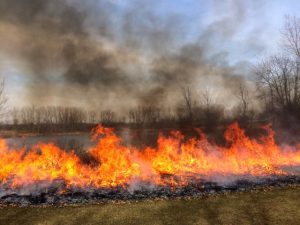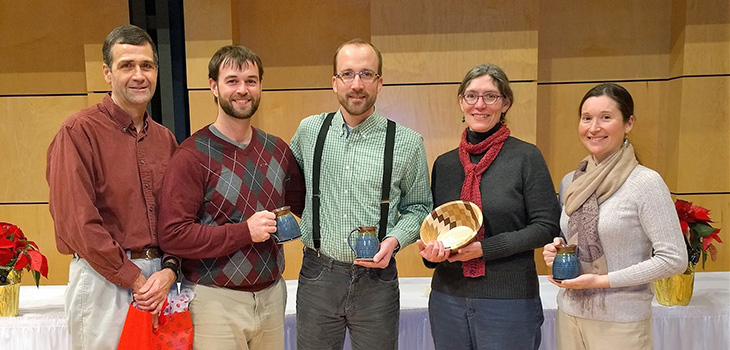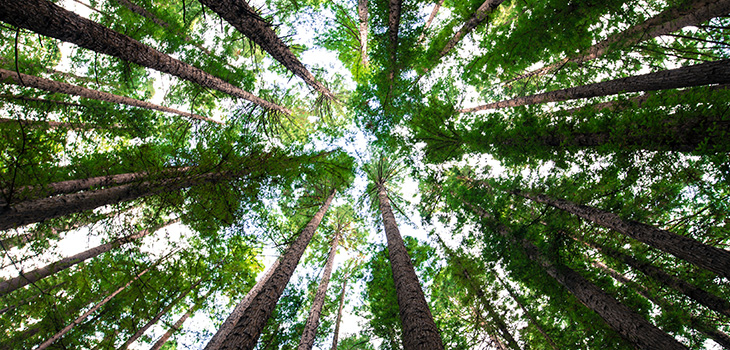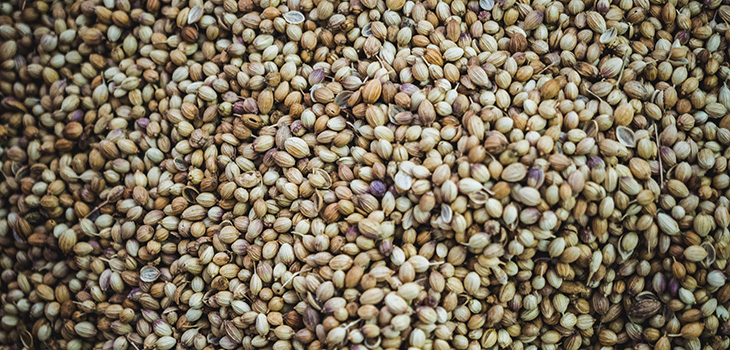 Warm weather the weekend of February 18 gave Land Manager Bill Minter and any nearby fire fans a leg up on spring prairie burning.
Warm weather the weekend of February 18 gave Land Manager Bill Minter and any nearby fire fans a leg up on spring prairie burning.
In order to burn a prairie, the standing grasses that fuel the fire must be dry and the wind must be low. Burning must also precede fresh green growth or the fire won’t burn well. Normally this doesn’t happen until mid-March at the earliest, but conditions aligned for a successful burn last weekend.
Burning Part of Research
On Saturday, burning the two sections of prairie on the Goodrich tract on the west side of the property became a family affair. Ryan Sensenig and his family and Carol Good-Elliott family assisted with the burning. Ryan, who is department chair of environmental science at Goshen College, is conducting research in this area related to the behavior and welfare of steers grazed on native grasses.
On Monday, Joel Pontius snapped the photo shown while serving on the crew that was burning the pocket prairies near Kesling Wetland.
Prairies are a natural part of the Indiana landscape. Traditionally, they were caused by lightning strikes. Later, Native Americans burned parts of the forest to favor grazers they hunted. Indiana receives enough rainfall to support trees, so a prairie that is not burned or mowed will return to forest.



